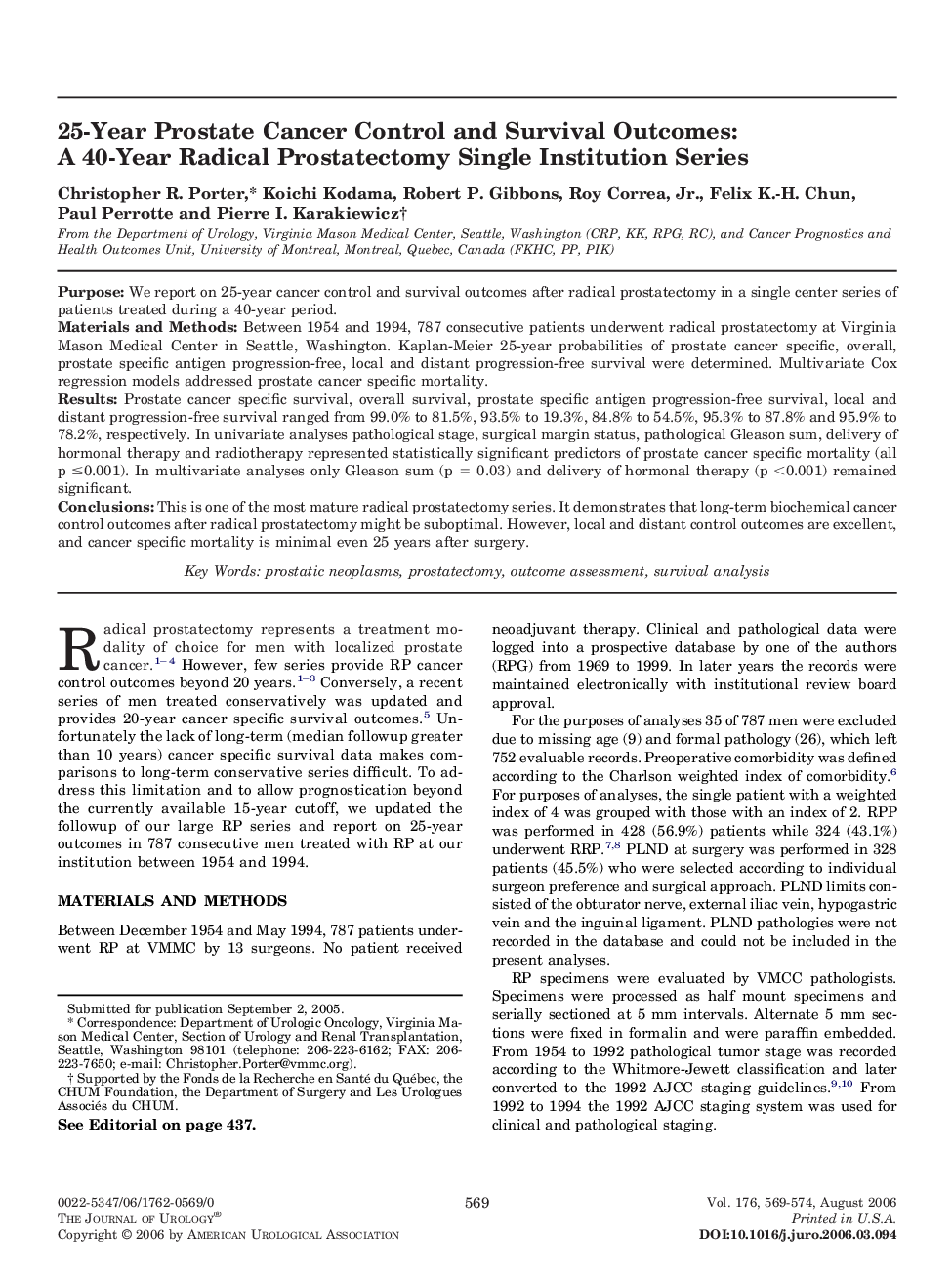| Article ID | Journal | Published Year | Pages | File Type |
|---|---|---|---|---|
| 3879506 | The Journal of Urology | 2006 | 6 Pages |
PurposeWe report on 25-year cancer control and survival outcomes after radical prostatectomy in a single center series of patients treated during a 40-year period.Materials and MethodsBetween 1954 and 1994, 787 consecutive patients underwent radical prostatectomy at Virginia Mason Medical Center in Seattle, Washington. Kaplan-Meier 25-year probabilities of prostate cancer specific, overall, prostate specific antigen progression-free, local and distant progression-free survival were determined. Multivariate Cox regression models addressed prostate cancer specific mortality.ResultsProstate cancer specific survival, overall survival, prostate specific antigen progression-free survival, local and distant progression-free survival ranged from 99.0% to 81.5%, 93.5% to 19.3%, 84.8% to 54.5%, 95.3% to 87.8% and 95.9% to 78.2%, respectively. In univariate analyses pathological stage, surgical margin status, pathological Gleason sum, delivery of hormonal therapy and radiotherapy represented statistically significant predictors of prostate cancer specific mortality (all p ≤0.001). In multivariate analyses only Gleason sum (p = 0.03) and delivery of hormonal therapy (p <0.001) remained significant.ConclusionsThis is one of the most mature radical prostatectomy series. It demonstrates that long-term biochemical cancer control outcomes after radical prostatectomy might be suboptimal. However, local and distant control outcomes are excellent, and cancer specific mortality is minimal even 25 years after surgery.
